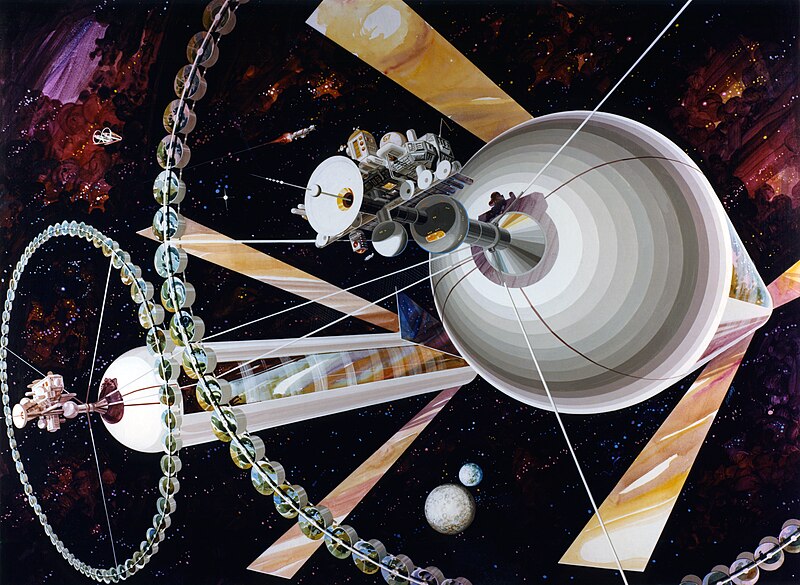
Will humanity ever transcend gravity to become a space-faring race? A simple napkin-based calculation will give you the answer.
From Scientific American:
Optimistic visions of a human future in space seem to have given way to a confusing mix of possibilities, maybes, ifs, and buts. It’s not just the fault of governments and space agencies, basic physics is in part the culprit. Hoisting mass away from Earth is tremendously difficult, and thus far in fifty years we’ve barely managed a total the equivalent of a large oil-tanker. But there’s hope.
Back in the 1970?s the physicist Gerard O’Neill and his students investigated concepts of vast orbital structures capable of sustaining entire human populations. It was the tail end of the Apollo era, and despite the looming specter of budget restrictions and terrestrial pessimism there was still a sense of what might be, what could be, and what was truly within reach.
The result was a series of blueprints for habitats that solved all manner of problems for space life, from artificial gravity (spin up giant cylinders), to atmospheres, and radiation (let the atmosphere shield you). They’re pretty amazing, and they’ve remained perhaps one of the most optimistic visions of a future where we expand beyond the Earth.
But there’s a lurking problem, and it comes down to basic physics. It is awfully hard to move stuff from the surface of our planet into orbit or beyond. O’Neill knew this, as does anyone else who’s thought of grand space schemes. The solution is to ‘live of the land’, extracting raw materials from either the Moon with its shallower gravity well, or by processing asteroids. To get to that point though we’d still have to loft an awful lot of stuff into space – the basic tools and infrastructure have to start somewhere.
And there’s the rub. To put it into perspective I took a look at the amount of ‘stuff’ we’ve managed to get off Earth in the past 50-60 years. It’s actually pretty hard to evaluate, lots of the mass we send up comes back down in short order – either as spent rocket stages or as short-lived low-altitude satellites. But we can still get a feel for it.
To start with, a lower limit on the mass hoisted to space is the present day artificial satellite population. Altogether there are in excess of about 3,000 satellites up there, plus vast amounts of small debris. Current estimates suggest this amounts to a total of around 6,000 metric tons. The biggest single structure is the International Space Station, currently coming in at about 450 metric tons (about 992,000 lb for reference).
These numbers don’t reflect launch mass – the total of a rocket + payload + fuel. To put that into context, a fully loaded Saturn V was about 2,000 metric tons, but most of that was fuel.
When the Space Shuttle flew it amounted to about 115 metric tons (Shuttle + payload) making it into low-Earth orbit. Since there were 135 launches of the Shuttle that amounts to a total hoisted mass of about 15,000 metric tons over a 30 year period.
Read the entire article after the jump.
Image: A pair of O’Neill cylinders. NASA ID number AC75-1085. Courtesy of NASA / Wikipedia.
